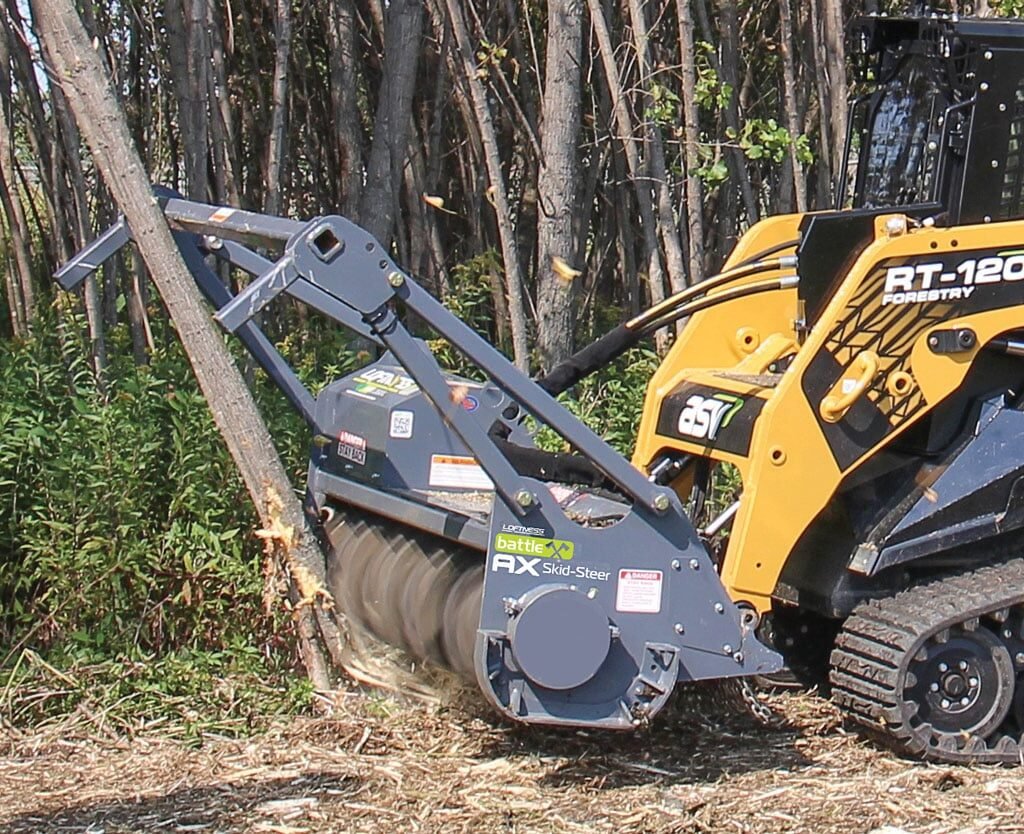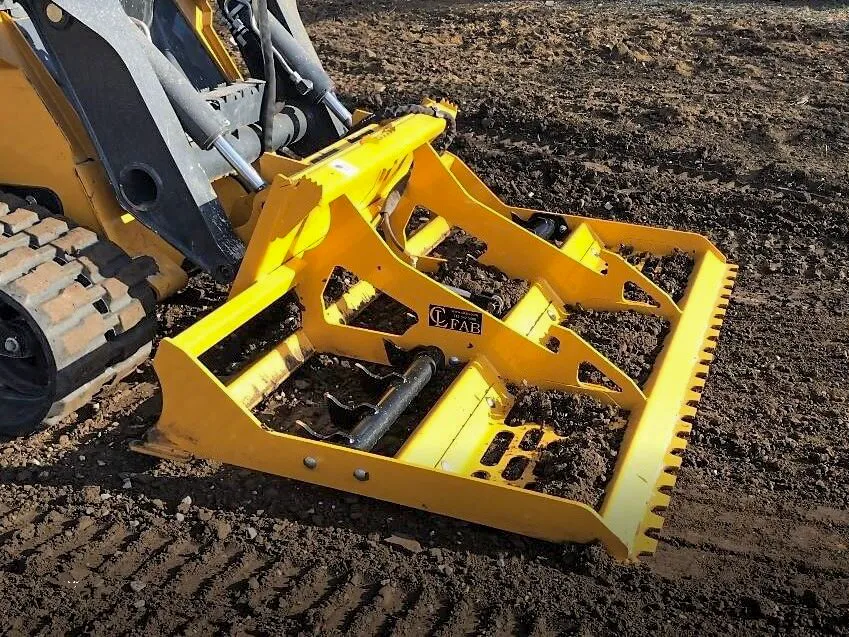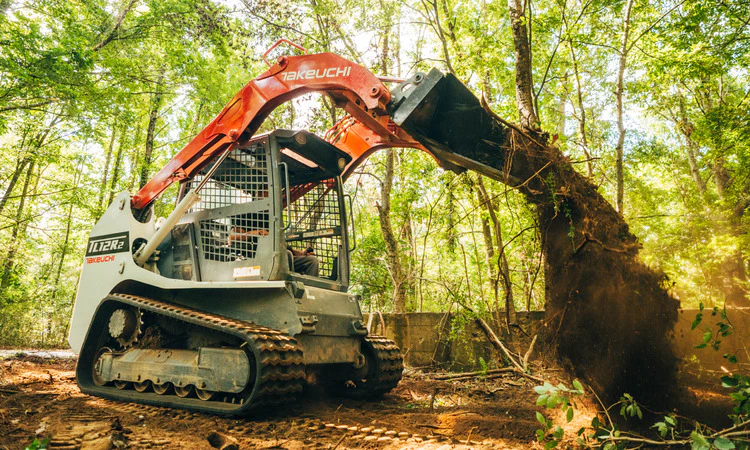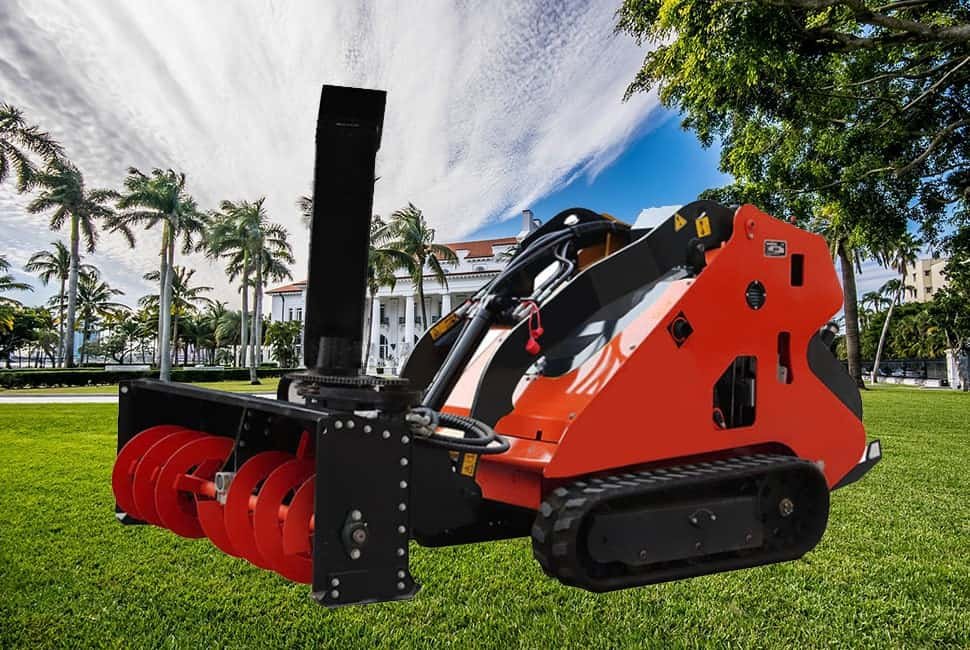Land clearing requires the right skid steer size to maximize efficiency. Choosing too small or too large can lead to ineffective results. Here’s what you need to know.
When clearing land, what size skid steer for land clearing is crucial. Generally, for land clearing, a medium to large skid steer (around 70-100 hp) with proper attachments is ideal to handle tough terrains and debris efficiently.
Let’s dive deeper into selecting the right skid steer for land clearing.
What Factors Affect the Skid Steer Size for Land Clearing?
The selection of a skid steer’s size is influenced by various factors, including terrain conditions, debris size, and the area to be cleared. Let’s delve into the key considerations to ensure you choose the right skid steer for your land-clearing project.
When it comes to land clearing, the type of terrain, the density of vegetation, and the size of debris are crucial factors in determining the appropriate skid steer size. These considerations not only ensure optimal performance but also help reduce equipment wear and tear.
For rough and uneven terrain, a larger, more powerful skid steer is essential. Such machines offer higher ground clearance and robust traction, enabling them to navigate challenging landscapes with ease. In contrast, if the land is heavily vegetated or filled with large stumps, a skid steer with a high lifting capacity and ample power is indispensable. This ensures that you can efficiently remove large obstacles without overstraining the machine.
Additionally, the weight and size of debris you plan to clear play a significant role in your machine choice. A smaller skid steer may struggle with large logs or thick brush, potentially leading to slower progress and increased wear on the machine. On the other hand, a larger skid steer, while more capable of handling heavy debris, may be less fuel-efficient and less maneuverable in tight spaces. Therefore, it’s important to strike a balance between power, maneuverability, and fuel efficiency to achieve the best results for your specific land-clearing needs.
What is the Best Skid Steer Size for Small to Medium Land Clearing Projects?
For smaller land clearing projects, a compact to medium-sized skid steer is often the perfect choice. Let’s take a closer look at the best options available.
A skid steer with an engine power in the 50-70 hp range is typically ideal for small to medium land clearing tasks. This size offers a well-balanced combination of maneuverability and power, making it versatile for a variety of jobs.
For smaller projects, such as clearing brush, small trees, and debris, a skid steer with a 50-70 hp engine is highly suitable. This power range ensures better fuel efficiency and enhanced maneuverability, particularly in tight spaces. These machines are also lighter, which reduces the risk of soil compaction and damage, making them excellent choices for residential or small commercial projects. However, it’s important to note that their lifting and digging capacity is relatively lower. As a result, they may struggle with larger logs or stumps, which would require more powerful models.

What Size Skid Steer For Land Clearing Projects Is The Best?
When it comes to large-scale land clearing, you need a skid steer that can handle tougher tasks and larger debris. Here are some key considerations to keep in mind.
For large land clearing projects, such as clearing wooded areas or preparing land for agriculture or construction, a skid steer with at least 80-100 hp is essential. This horsepower range ensures that the machine can effectively manage larger debris and navigate rough terrain with ease.
These powerful skid steers are designed to move heavy debris, large stumps, and dense underbrush. They also offer greater lifting capacities, which is crucial for efficiently hauling large materials away from the work area. However, while larger skid steers provide the necessary power, they may be less maneuverable and can cause more ground disturbance compared to their smaller counterparts. As a result, they are best suited for more open spaces with minimal obstacles, where their power and capacity can be fully utilized without compromising on efficiency or causing unnecessary damage to the surrounding area.
How Do Skid Steer Attachments Affect Your Size Choice for Land Clearing?
Attachments play a crucial role in determining how effectively a skid steer performs during land clearing. Let’s explore how different attachments can influence your choice of skid steer size.
The attachments you choose, such as a brush cutter, stump grinder, or forestry mulcher, can significantly impact the size and power requirements of your skid steer. Larger and more powerful attachments demand more robust machines to operate efficiently.

Skid steer attachments like brush cutters, stump grinders, and forestry mulchers are essential tools for effective land clearing. When selecting a skid steer, it’s vital to consider both the weight and power requirements of these attachments. Heavy-duty attachments, such as stump grinders or mulchers, require higher horsepower and a skid steer with a larger frame to accommodate the added weight and maintain stability. For instance, if you plan to use heavy attachments regularly, opting for a skid steer in the 80-100 hp range is advisable. This ensures that the machine can handle the demands of the attachment without compromising on performance.
Additionally, some attachments can be quite heavy or cumbersome. Choosing a skid steer with a higher lifting capacity not only ensures better handling but also enhances safety during operations. A skid steer with sufficient lifting capacity can more easily manage the weight of the attachment, reducing the risk of tipping or other accidents. Therefore, when selecting a skid steer for land clearing, it’s essential to match the machine’s capabilities with the specific requirements of the attachments you plan to use.
How Do Ground Conditions Influence the Skid Steer Size for Land Clearing?
The condition of the land can significantly influence your choice of skid steer. Let’s delve into how different terrains necessitate different types of machines.
In soft, marshy, or wet soil, a skid steer with higher ground clearance and better weight distribution is essential to prevent sinking or getting stuck. These conditions call for a larger machine or one equipped with tracks, which can distribute the weight more evenly and provide better stability.
On the other hand, rocky or uneven terrain demands a skid steer with more power and superior traction to prevent wheel slippage. Larger machines or track skid steers are often better suited for these environments, as they can navigate the challenging surfaces more effectively.
Moreover, when you need to move debris over rough surfaces, a skid steer with greater power and lifting capacity becomes crucial. This not only enhances efficiency but also ensures safety by allowing the machine to handle heavier loads without strain. In summary, matching the skid steer’s capabilities to the specific ground conditions is key to achieving optimal performance and minimizing equipment wear.

Are Track Skid Steers Better Than Wheeled Skid Steers for Land Clearing?
Track skid steers often outperform wheeled models in land clearing tasks, particularly in challenging terrain. Let’s take a closer look at the benefits and limitations of both types to help you make an informed decision.
Track skid steers are renowned for their superior stability and traction, especially on soft or uneven ground. Their design, with a larger surface area, allows for better weight distribution, significantly reducing the risk of getting stuck. This makes them the go-to choice for land clearing in marshy, wet, or muddy conditions. For instance, in areas with loose soil or frequent rainfall, a track skid steer can navigate the terrain with ease, ensuring smooth and efficient operations.
However, track skid steers do come with some limitations. They are generally less maneuverable than their wheeled counterparts, which can be a drawback in tight spaces or on harder ground. The increased surface area and weight distribution that provide stability can also make them slower to turn and more challenging to handle in confined areas.

On the other hand, wheeled skid steers excel in environments with paved or solid ground. They are more efficient when speed is a priority and offer greater maneuverability, making them ideal for tasks that require quick movements and tight turns. For example, in urban settings or on construction sites with well-established roads, a wheeled skid steer can outperform a track model.
However, wheeled skid steers may struggle with traction on softer surfaces, such as muddy or sandy terrain. Their smaller contact area can lead to slipping or sinking, which can hinder productivity and increase the risk of equipment damage.
Ultimately, the decision between a track and a wheeled skid steer will depend on the specific ground conditions of the land being cleared. If your project involves navigating soft, uneven, or wet terrain, a track skid steer is likely the better choice. Conversely, if your work area is primarily solid ground or requires frequent maneuvering in tight spaces, a wheeled skid steer may be more suitable. By carefully considering the terrain and the specific demands of your land clearing project, you can select the skid steer that will deliver the best performance and efficiency.
Краткое содержание
Choosing the right skid steer size for land clearing is key to efficiency. Understand your terrain, debris size, and required attachments to make the best choice.


